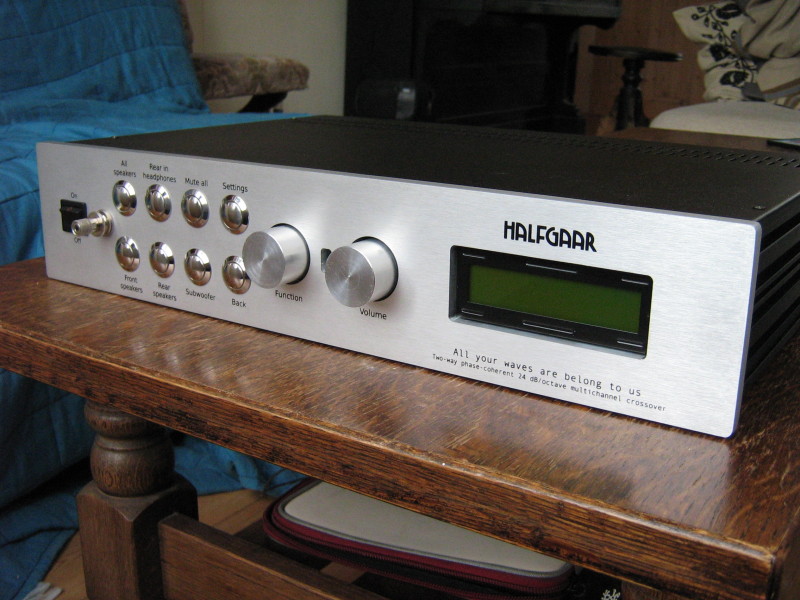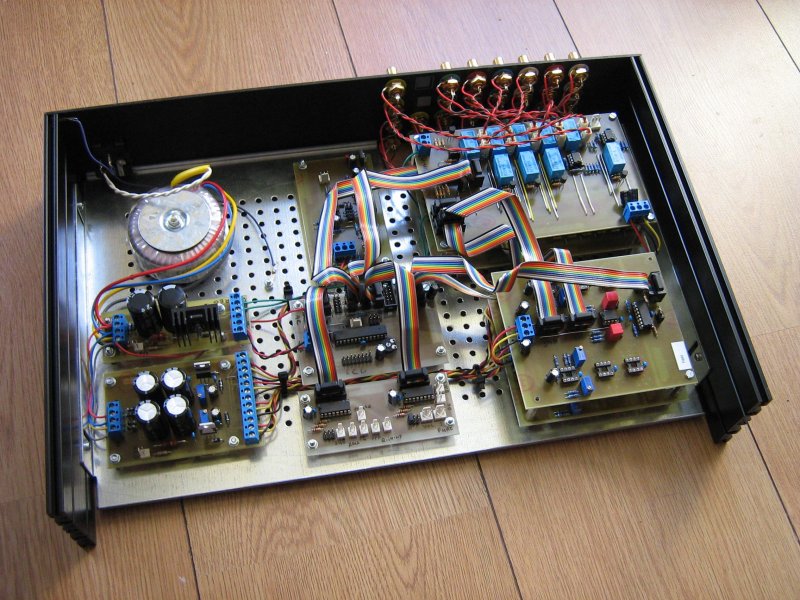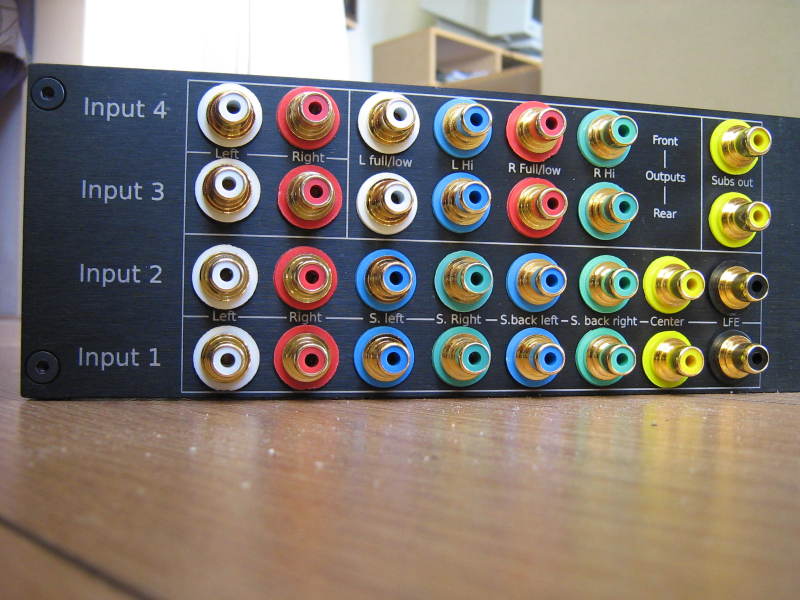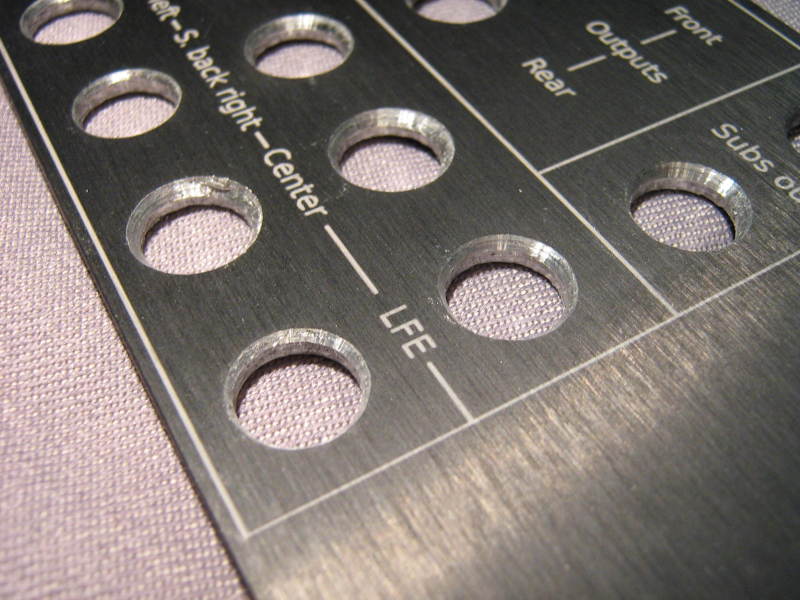Multi-channel digitally controlled crossover
Introduction

Because my sound system is bi-amped, I need an electronic crossover to separate the high and low frequency content. As a basis, I used Rod Elliott's 24 dB/octave Linkwitz-Riley crossover, but added a significant amount of extra circuitry. I was sick of using potmeters, because I've always had tracking problems with them (meaning that especially on low volumes, the channels would be at different levels), and because I wanted a four channel version, tracking would become even harder. That's why I decided to make digitally controlled version.
To that end, I used the Burr-Brown PGA2311. It is a high performance gain stage chip, controlled by the SPI bus. I used an Atmega168 micro controller to connect everything together (all user controlers, input selection, output selection and the actual gain stages).
The use of micro controllers is often avoided because it creates extra complexity, but if you have some programming skills, it actually makes things a lot easier, in my opinion.
I use this crossover to drive a pair of Acoustic Energy AE120 speakers, converted to bi-amping of course.
The inside

What is it?
- Analog power supply.
- Digital power supply.
- Micro controller board with I²c and SPI bus connections.
- I²C controlled user controls PCB.
- Two P09 crossovers preceded by a Burr Brown PGA2311 volume control, SPI bus driven.
- P113 headphone amp.
- Input router about 20 relays, controlled by I²c, selecting which input you want enabled.
- Output router. Also I²c controlled, selecting which output you want, if you want bi-amping enabled or not, etc.
Case brand is Modu, which provides CNC milling services. I drilled the back myself, and had it laser engraved at Fablab Foundation nearby. The front I had silk-screened professionally.
I also programmed Philips RC5 IR remote control decoding in the chip, so I can use any remote control to control the volume. On my todo list is programming a learning mode, instead of hardcoding the IR command and address in the program.
Some more pictures


